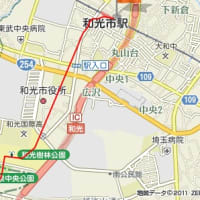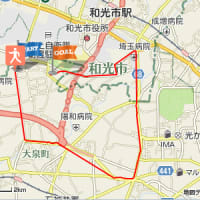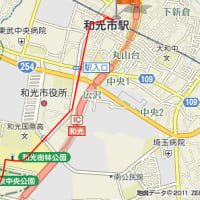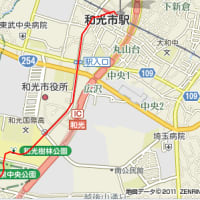Mark J. Chaisson, Pavel A. Pevzner.
Genome Research, Advance articles | DOI: 10.1101/gr.7088808
In the last year, high-throughput sequencing technologies have progressed from proof-of-concept to production quality. While these methods produce high-quality reads, they have yet to produce reads comparable in length to Sanger-based sequencing. Current fragment assembly algorithms have been implemented and optimized for mate-paired Sanger-based reads, and thus do not perform well on short reads produced by short read technologies. We present a new Eulerian assembler that generates nearly optimal short read assemblies of bacterial genomes and describe an approach to assemble reads in the case of the popular hybrid protocol when short and long Sanger-based reads are combined.# とりあえず、最新のシーケンサーでゲノムをアセンブルするのなら読んでおいた方がいいかも

Masaki Morishige, Shigeru Hashimoto, Eiji Ogawa, Yoshinobu Toda, Hirokazu Kotani, Mayumi Hirose, Shumei Wei, Ari Hashimoto, Atsuko Yamada, Hajime Yano, Yuichi Mazaki, Hiroshi Kodama, Yoshinori Nio, Toshiaki Manabe, Hiromi Wada, Hidenori Kobayashi, Hisataka Sabe.
Nature Cell Biology, Advance online publication | doi:10.1038/ncb1672
Epidermal growth factor (EGF) receptor (EGFR) signalling is implicated in tumour invasion and metastasis. However, whether there are EGFR signalling pathways specifically used for tumour invasion still remains elusive. Overexpression of Arf6 and its effector, AMAP1, correlates with and is crucial for the invasive phenotypes of different breast cancer cells. Here we identify the mechanism by which Arf6 is activated to induce tumour invasion. We found that GEP100/BRAG2, a guanine nucleotide exchanging factor (GEF) for Arf6, is responsible for the invasive activity of MDA-MB-231 breast cancer cells, whereas the other ArfGEFs are not. GEP100, through its pleckstrin homology domain, bound directly to Tyr1068/1086-phosphorylated EGFR to activate Arf6. Overexpression of GEP100, together with Arf6, caused non-invasive MCF7 cells7 to become invasive, which was dependent on EGF stimulation. Moreover, GEP100 knockdown blocked tumour metastasis. GEP100 was expressed in 70% of primary breast ductal carcinomas, and was preferentially co-expressed with EGFR in the malignant cases. Our results indicate that GEP100 links EGFR signalling to Arf6 activation to induce invasive activities of some breast cancer cells, and hence may contribute to their metastasis and malignancy.# Arf6のためのグアニン・ヌクレオチド変換因子だそうです

# 本当にタミフルの影響なのか、ビミョーな結果です

# 一度汚すとどれだけ回復するのが大変かという実例…

Yoshihiro Onouchi, Tomohiko Gunji, Jane C Burns, Chisato Shimizu, Jane W Newburger, Mayumi Yashiro, Yoshikazu Nakamura, Hiroshi Yanagawa, Keiko Wakui, Yoshimitsu Fukushima, Fumio Kishi, Kunihiro Hamamoto, Masaru Terai, Yoshitake Sato, Kazunobu Ouchi, Tsutomu Saji, Akiyoshi Nariai, Yoichi Kaburagi, Tetsushi Yoshikawa, Kyoko Suzuki, Takeo Tanaka, Toshiro Nagai, Hideo Cho, Akihiro Fujino, Akihiro Sekine, Reiichiro Nakamichi, Tatsuhiko Tsunoda, Tomisaku Kawasaki, Yusuke Nakamura, Akira Hata.
Nature Genetics, Advance online publication | doi:10.1038/ng.2007.59
Kawasaki disease is a pediatric systemic vasculitis of unknown etiology for which a genetic influence is suspected. We identified a functional SNP (itpkc_3) in the inositol 1,4,5-trisphosphate 3-kinase C (ITPKC) gene on chromosome 19q13.2 that is significantly associated with Kawasaki disease susceptibility and also with an increased risk of coronary artery lesions in both Japanese and US children. Transfection experiments showed that the C allele of itpkc_3 reduces splicing efficiency of the ITPKC mRNA. ITPKC acts as a negative regulator of T-cell activation through the Ca2+/NFAT signaling pathway, and the C allele may contribute to immune hyper-reactivity in Kawasaki disease. This finding provides new insights into the mechanisms of immune activation in Kawasaki disease and emphasizes the importance of activated T cells in the pathogenesis of this vasculitis.# 原因遺伝子じゃなくて「関連」遺伝子です…原因不明といわれる川崎病に一筋の光明となるのか

# 移植した筋芽細胞が心筋細胞になったわけではないようですが、それにしてもここまでの回復が見込めるというのは凄い技術です

# こんなクソでかいものを打ち上げるですか…

# 東京の空を眺めてもムリだろうなぁ…

# 見落としてました…

# 原発絶対反対の人達は、こういう記事を見てどう考えるんだろうか?

# あれよあれよという間に10年間250億円の予算が約束されちゃいました

# 24日に行きます、大ロボット博

# よほど強烈に散弾銃のような破片が飛んできたんでしょうね

# 双眼鏡でも見えるかな?

# 科学重大ニュースか…自分で作ってみるのも面白そうだな

M. Rosenberg, T. Knaan, D. Cohen.
J Dent Res 86, 997-1000 (2007) | doi:
Bad breath is a common condition, difficult to assess in the general population. In the present study, we tested the hypothesis that a self-administered questionnaire can help identify factors associated with greater risk of oral malodor. Persons (n = 88) undergoing routine medical check-ups completed a questionnaire including 38 questions on general and oral health, dietary habits, and their own oral malodor levels. Oral malodor assessments included odor judge scores, volatile sulfide levels (via a Halimeter®, Interscan Corp.), and salivary β-galactosidase. Among the questionnaire results, 9 responses were significantly associated with odor judge scores (p <0.05, unpaired t test), including questions on alcohol intake and body mass index (BMI). Predictions of odor judge scores based on these 9 questions (linear multiple regression analysis) yielded R = 0.601; when introduced together with Halimeter® and β-galactosidase scores, the correlation rose to R = 0.843. The results suggest that alcohol intake and BMI may be factors that help predict oral malodor. # どうして10月号の論文を今頃…



















